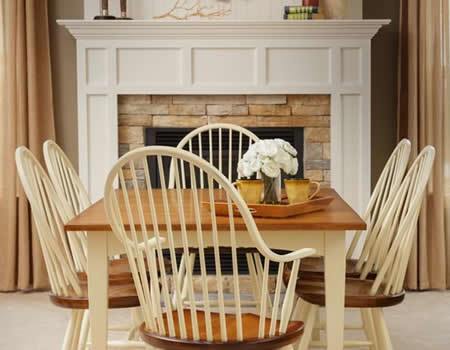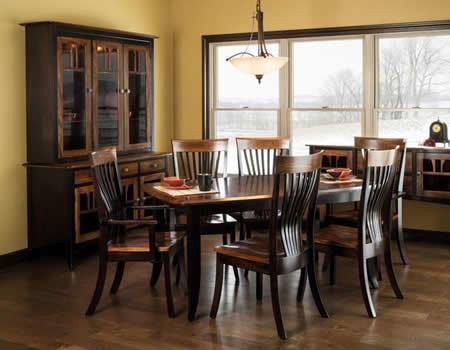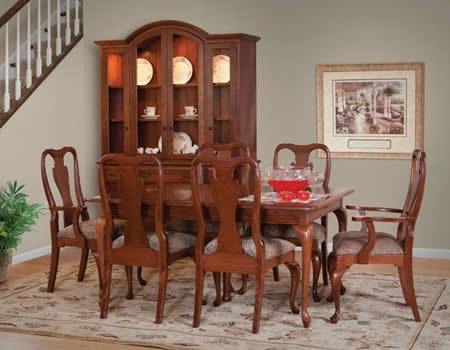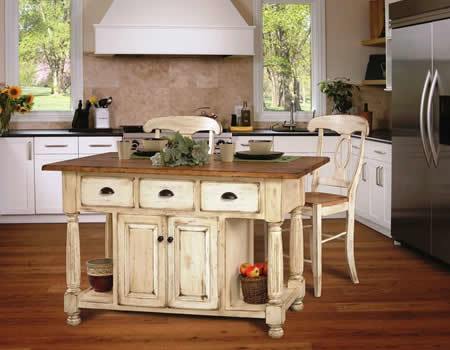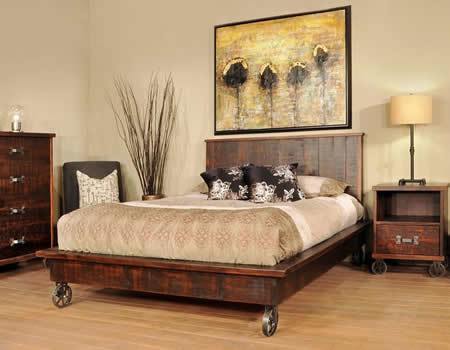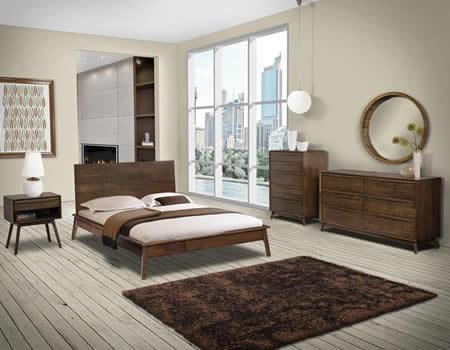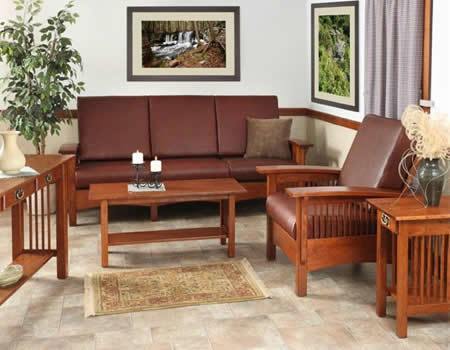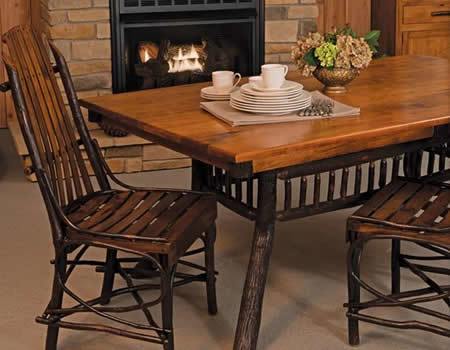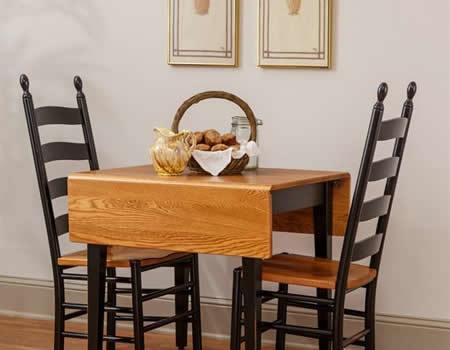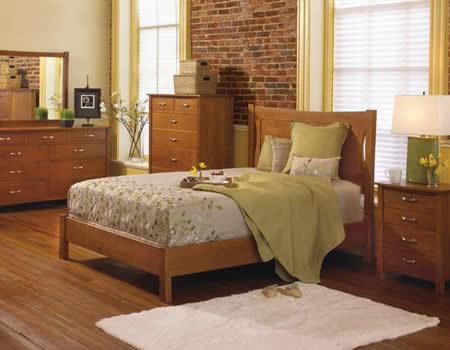Contact our Furniture Specialists
Phone: 941-867-2233
Monday-Saturday: 9 a.m. to 6 p.m. ET
Sunday: 11 a.m. to 7 p.m. ET
Phone: 941-867-2233
Monday-Saturday: 9 a.m. to 6 p.m. ET
Sunday: 11 a.m. to 7 p.m. ET
Reclaimed wood furniture is most commonly found in farmhouse, industrial, and rustic style homes, although furniture made from reclaimed wood can be found in a variety of styles.
While meticulously deconstructing old structures to salvage their wood is not a new concept, reclaimed wood arguably didn’t become a popular furniture and home accent option until recent years. Therefore, it’s not surprising that one of the most common questions about it is “what does reclaimed wood mean”? Wood that has been previously used or discarded and salvaged or repurposed is considered reclaimed.
Reclaimed wood can come from very old buildings and structures (post-consumer reclaimed wood) and can also be materials and objects created from wood waste (post-industrial reclaimed wood). Reclaimed wood may also come from dead and dying trees or from water reclaimed wood – logs or trees that ended up submerged in water for various reasons.
Examples of old buildings and structures that have been used to source reclaimed wood include old wood barns, factories, warehouses, bridges, and retired ships. Planks from fences, palettes, and wine casks have also been repurposed to create everything from accent walls and cabinets to furniture and new wood buildings and structures.
Items made from reclaimed wood do not require trees to be cut down, rather wood or wood waste that is already available is given new life and repurposed. This saves the wood from being chipped, burned, or sent to a landfill, making reclaimed wood an eco-friendly option.
The history of reclaimed wood furniture is tied to the history of the wood it is made from and what it has been repurposed from.
The origins of reclaimed wood go back to old growth forests – forests that attained great age without much disturbance. As populations grew and settlers migrated to new areas, the history of reclaimed lumber would come to be influenced by those who found ways to extract trees from old growth forests, prior to modern construction and milling methods, and use them to build everything from homes and barns to general stores and churches that made up their settlements and communities.
Reusing the wood from the abandoned structures of old towns has been a common practice in Germany since the 1940’s and on the East Coast of the United States since the 1970’s. In the 1980’s the movement started to gain momentum on the West Coast as the availability of good quality new wood declined and concerns about the negative impact the lumber industry was having on the environment grew. Still, it was not until the 1990’s that reclaimed wood really started to gain traction as upcycling and recycling materials started to become popular.
Early 19th century barns made from hand hewn boards and beams are the most common source of reclaimed wood in the United States. Because these boards and beams were crafted from nearby trees and forests, wood species used to make reclaimed furniture varies. Each piece of furniture is unique due the barn wood being naturally distressed and colored by exposure to the elements.
Each piece of reclaimed wood furniture also has its own story to tell and preserves a little bit of history.

Though furniture made from reclaimed wood may not be everyone’s cup of tea, it has a lot of great features and benefits -- from its unique history and details to its sustainability.
Sustainable & Eco-friendly
Reclaimed wood furniture is sustainable because it is made from wood that requires fewer resources to “harvest” and process. It is eco-friendly because it is made from recycled and/or repurposed wood. It also saves wood from ending up in landfills.
Durability & Stability
The wood used to make reclaimed wood furniture is typically extremely durable and stable because of its age and exposure to weather. This is especially true for barnwood furniture since century-old (or more) barns (and other structures) tended to be made from majestic, mature trees from old-growth forests.
Character & Uniqueness
Naturally “aged” by elements like sand, wind, and rain, and featuring “imperfections” like nail holes, sunspots, worm holes that give it character, make each piece of reclaimed wood furniture unique and unduplicatable.
History
Each tree, plank, board, etc. used to create a piece of reclaimed wood furniture provides a connection to the past or has a story to tell.
Love the story your reclaimed barn wood furniture tells through each unique mark! DutchCrafters is proud to carry a number of eco-friendly products made from century old reclaimed wood. Our Urban Barnwood Collection feature furniture made from century-old barns. From reclaimed wood coffee tables and dining tables to reclaimed wood desks and shelves, you will find unique furniture rich with character for every room. Each piece of furniture is handcrafted from salvaged American barn wood and preserved to tell its 100-year-old history through the original knot holes, worm holes, sunspots and nail holes! Our Amish woodworkers pay extra attention to detail preserving the unique personality in all the reclaimed wood furniture. Each piece made especially for you with a story to tell.
The reclaimed wood is both locally sourced and made by our talented Amish craftsman creating truly eco-friendly furniture. Abandoned or no longer needed American barns are disassembled by hand, piece by piece to salvage as much of the wood as possible. Then sent through a vigorous cleaning process to get all the dirt off, remove the nails and kiln dried. After the cleaning process, the reclaimed wood is ready to be handcrafted into beautiful, unique furniture for your home. Our reclaimed wood furniture collections and home décor are excellent ways to preserve the old and vintage and give a natural resource a second life!


